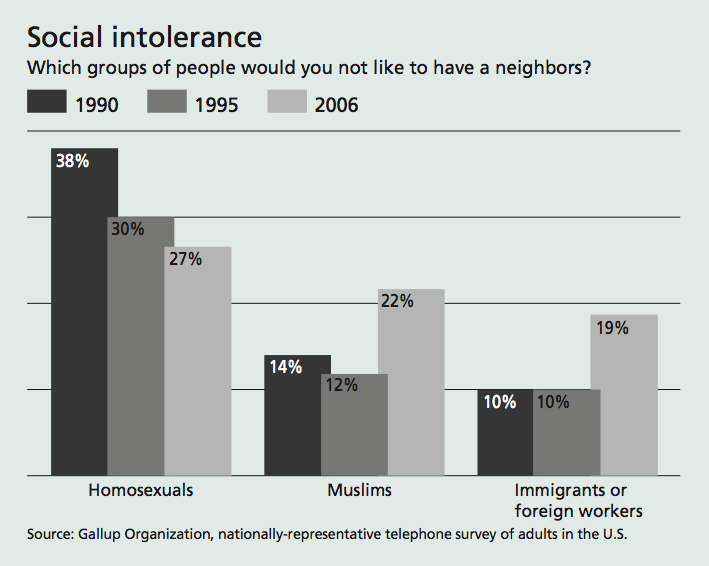During the 19th the United States received many new residents from China. Sometimes they came voluntarily; sometimes they were imported forcibly. The term “Shanghaied” originally described the forced stealing of Chinese men to come work in America. Many of them worked on the transcontinental railroad, built between 1863 and 1869. Ninety percent of the workers on the central Pacific track, for example, were Chinese.
After the railroad was completed, however, many Chinese went to work in industries in which they competed with white American workers, especially mining, and they became scapegoats for white unemployment. For some examples of anti-Asian propaganda, see our collection of “yellow peril” posters and cartoons.
Animosity towards the Chinese culminated in the Chinese Exclusion Act of 1882. The Act meant that Chinese in America, most of whom were adult men, had little hope of reuniting with their families if they stayed in the U.S.; it also allowed the U.S. to deny re-entry if a Chinese person already in the U.S. left the country; and it excluded the Chinese in America from getting U.S. citizenship.
The Chinese Exclusion Act is an ugly moment in U.S. history that was supported by many Americans. But this support wasn’t universal. The political cartoon below attacks the Act. “No admittance to Chinamen,” it reads. But “communist nihilist-socialist fenian & hoodlum [are] welcome.” The punchline reads, sarcastically, “We must draw the line somewhere, you know.”
 (Image from Time.)
(Image from Time.)
The Fenian, by the way, were Irish political groups, suggesting that the embrace of one minority group did not necessarily translate into the embrace of others. Or maybe the cartoon was meant to go the other way: “If we’re going to exclude the Chinese, let’s exclude others as well.”
UPDATE: Loki offered the following helpful correction to my description of the word “Shanghaid”:
A bit of disagreement: The verb to Shanghai someone was more often used with respect to the practice of crimps or other people to use force, intimidation or outright kidnapping to man merchant ships during the 18th century.
I’m not about to claim that there weren’t cases of people from Shanghai being forcibly relocated to the US to work on the railroad – but the term refers to one of the abuses of common sailors that was considered usual practice in the age of sail.
Wikipedia article here, for some background of the maritime history of the term: http://en.wikipedia.org/wiki/Shanghaiing
Lisa Wade, PhD is an Associate Professor at Tulane University. She is the author of American Hookup, a book about college sexual culture; a textbook about gender; and a forthcoming introductory text: Terrible Magnificent Sociology. You can follow her on Twitter and Instagram.












